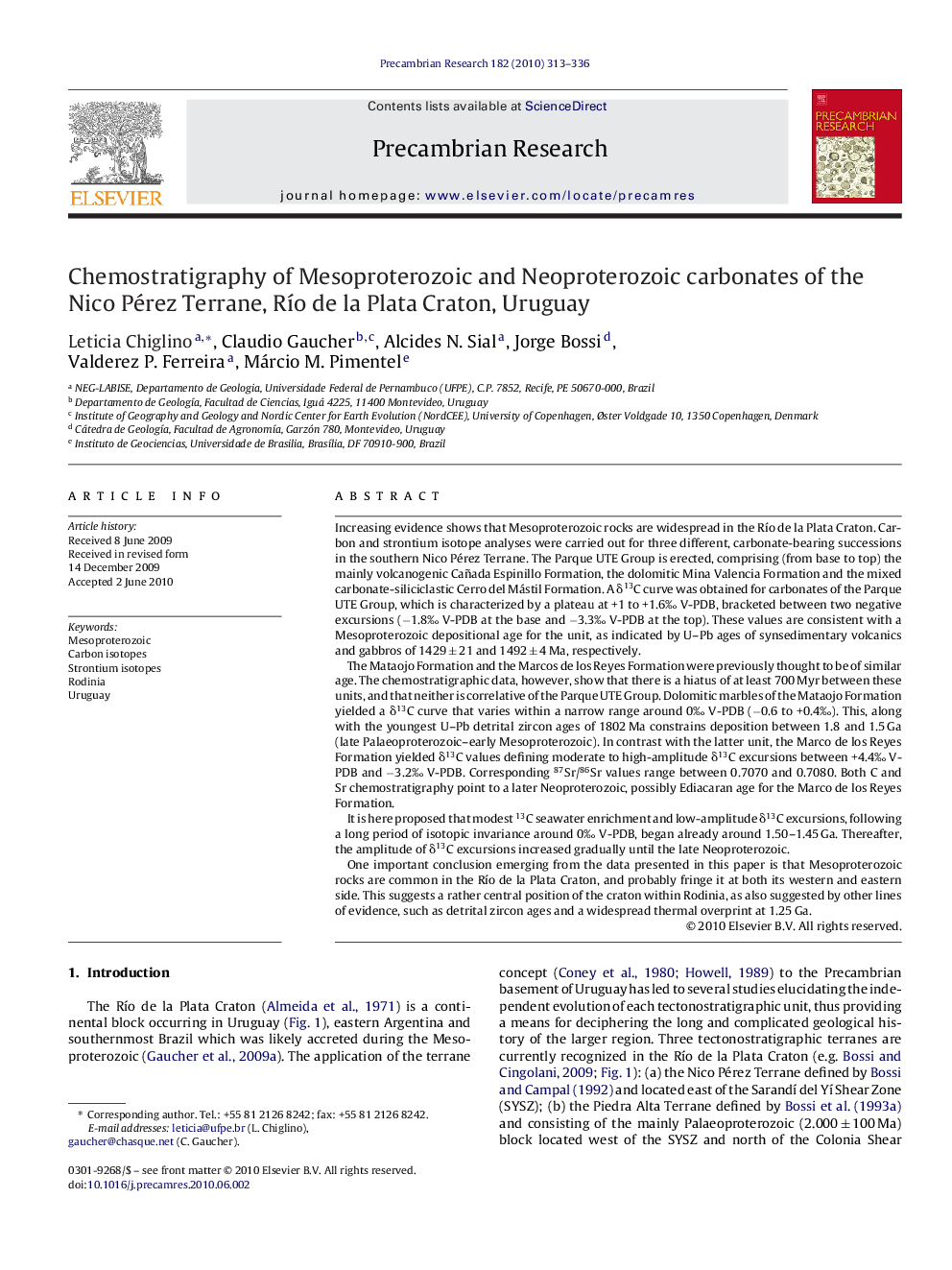| Article ID | Journal | Published Year | Pages | File Type |
|---|---|---|---|---|
| 4723884 | Precambrian Research | 2010 | 24 Pages |
Increasing evidence shows that Mesoproterozoic rocks are widespread in the Río de la Plata Craton. Carbon and strontium isotope analyses were carried out for three different, carbonate-bearing successions in the southern Nico Pérez Terrane. The Parque UTE Group is erected, comprising (from base to top) the mainly volcanogenic Cañada Espinillo Formation, the dolomitic Mina Valencia Formation and the mixed carbonate-siliciclastic Cerro del Mástil Formation. A δ13C curve was obtained for carbonates of the Parque UTE Group, which is characterized by a plateau at +1 to +1.6‰ V-PDB, bracketed between two negative excursions (−1.8‰ V-PDB at the base and −3.3‰ V-PDB at the top). These values are consistent with a Mesoproterozoic depositional age for the unit, as indicated by U–Pb ages of synsedimentary volcanics and gabbros of 1429 ± 21 and 1492 ± 4 Ma, respectively.The Mataojo Formation and the Marcos de los Reyes Formation were previously thought to be of similar age. The chemostratigraphic data, however, show that there is a hiatus of at least 700 Myr between these units, and that neither is correlative of the Parque UTE Group. Dolomitic marbles of the Mataojo Formation yielded a δ13C curve that varies within a narrow range around 0‰ V-PDB (−0.6 to +0.4‰). This, along with the youngest U–Pb detrital zircon ages of 1802 Ma constrains deposition between 1.8 and 1.5 Ga (late Palaeoproterozoic–early Mesoproterozoic). In contrast with the latter unit, the Marco de los Reyes Formation yielded δ13C values defining moderate to high-amplitude δ13C excursions between +4.4‰ V-PDB and −3.2‰ V-PDB. Corresponding 87Sr/86Sr values range between 0.7070 and 0.7080. Both C and Sr chemostratigraphy point to a later Neoproterozoic, possibly Ediacaran age for the Marco de los Reyes Formation.It is here proposed that modest 13C seawater enrichment and low-amplitude δ13C excursions, following a long period of isotopic invariance around 0‰ V-PDB, began already around 1.50–1.45 Ga. Thereafter, the amplitude of δ13C excursions increased gradually until the late Neoproterozoic.One important conclusion emerging from the data presented in this paper is that Mesoproterozoic rocks are common in the Río de la Plata Craton, and probably fringe it at both its western and eastern side. This suggests a rather central position of the craton within Rodinia, as also suggested by other lines of evidence, such as detrital zircon ages and a widespread thermal overprint at 1.25 Ga.
